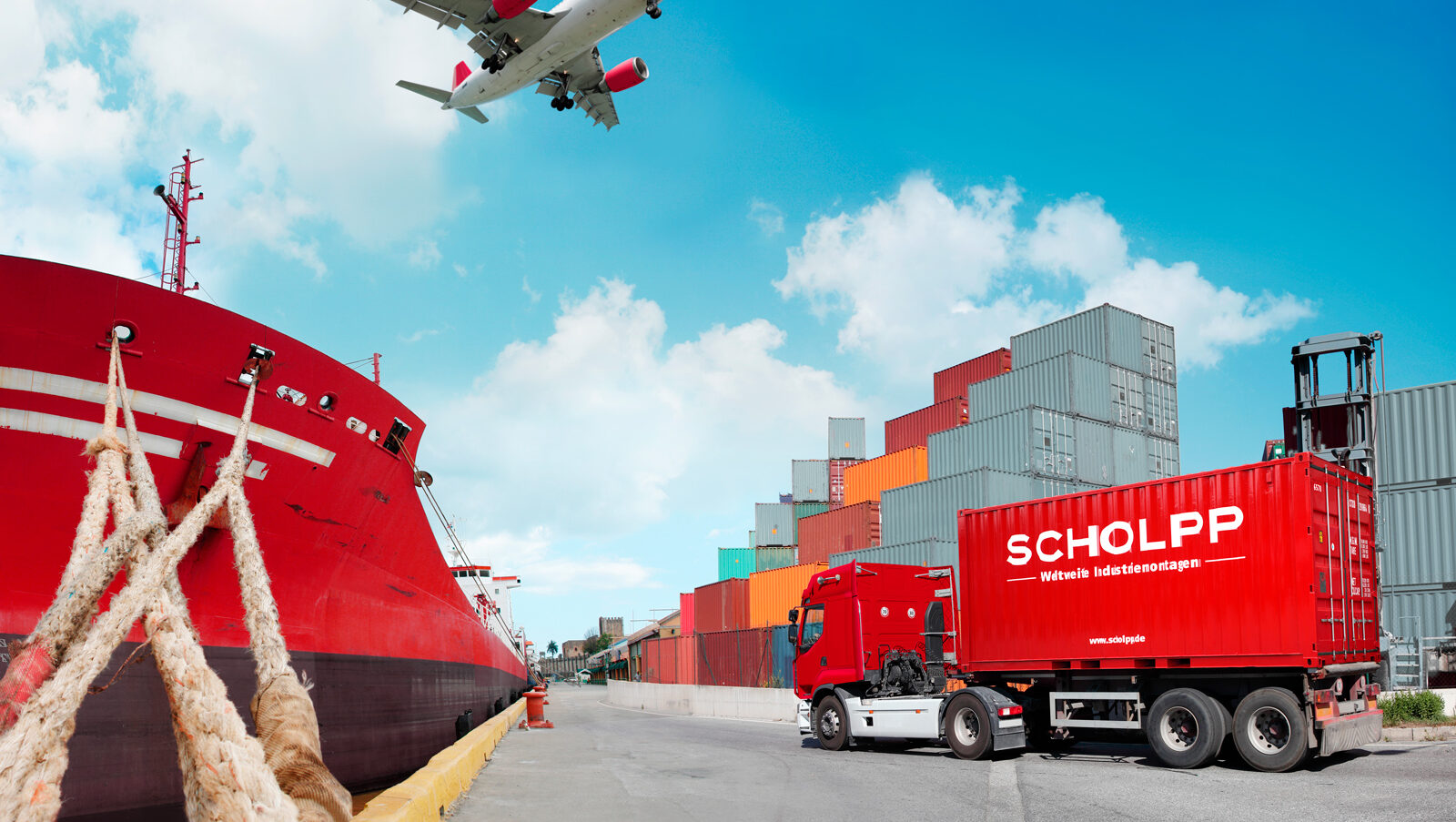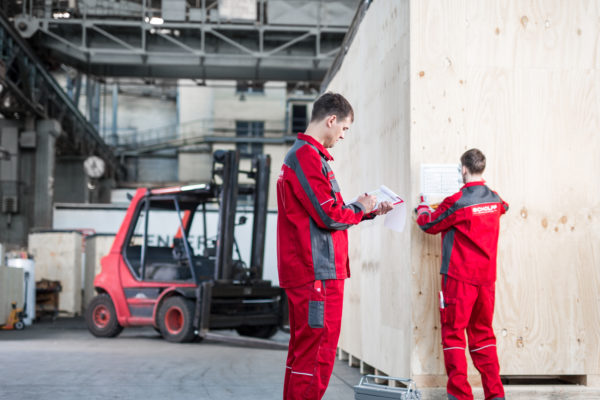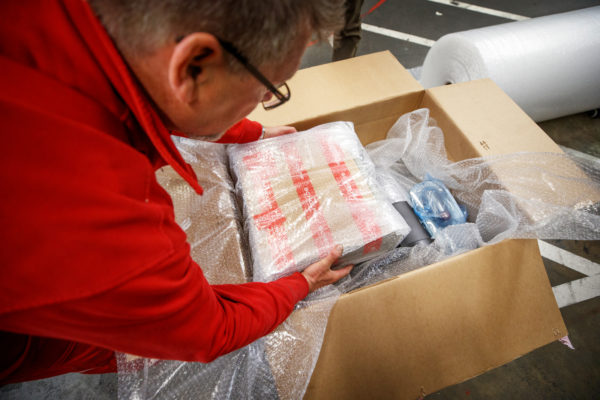The coronavirus crisis has shaken the global economy, uncovering the weaknesses in complex international supply and value chains. Companies are taking sustainable actions in response to COVID-19. But what exactly are these, and how appropriate are they?
Tectonic shifts in the global economy
Global trade is hardly a new invention; it was well established in antiquity and the Middle Ages. At that time, the key trade route between Europe and China was the Silk Road. Goods are still exchanged along this route via land and sea – the difference being that nowadays the value creation processes are more complex, and transport is cheaper and faster. Measured in terms of global gross domestic product, trade between countries increased by an incredible 21 percent between 1990 and 2011. Following on from the two world wars in the 20th century, the terror attacks of September 11, 2001, and the collapse of Lehman Brothers in 2008, the global coronavirus pandemic is now slowing the economy. Some branches of industry have ground to a halt because of it. Factors having a big effect include disruptions to supply, limited travel by air and sea, and border controls and closures.
China’s story
With the fall of the Iron Curtain and China’s acceptance into the World Trade Organization, China has become an economic heavyweight and a force to be reckoned with. The Middle Kingdom is not merely one of the biggest markets in the world for new cars; for many companies in the automotive industry, China is also a key market for outsourcing production and saving on labor costs. A total of 60 percent of global trade between 1990 and the financial crisis of 2008 was accounted for by the global value chains. Since 2011 at the latest, however, there has been minimal further expansion. Researchers from the prestigious Stanford University identify the reason for this stagnation as growing uncertainty of businesses in relation to the constantly changing global political situation. More recently, the world had to absorb the shock of Brexit – and then came coronavirus.
Glocalization vs. globalization
Growth and stagnation represent the natural cycles of economic life. These cycles, which for the large part follow a sine wave both globally and nationally, are particularly strongly affected by unforeseeable and sudden phenomena. The US economist Nassim Nicholas Taleb calls these “black swans.” Even before the coronavirus pandemic, global supply chains were under significant pressure for a range of reasons including increasing labor costs in China, President Trump’s trade war, and advances in robotics, automation, and 3D printing.
For supply and value chains that are generally structured in long, complex steps, the worst case scenario is that in some circumstances, if just one single element fails, the entire process needs to be stopped. Circumstances that have already changed, such as increased tariffs, or trade disputes, are enough to have this effect. Businesses are drawing the logical conclusion – moving away from global thinking towards increased localization, to ensure the supply of goods. German futurist Matthias Horx believes this transition from a global system to “glocalization” is inescapable: “Businesses now want to restructure and reduce the multistage, multinational supply chains that currently dominate production.”
Rethinking the international outlook
Businesses are thus already working on preventive measures so that they can be significantly more resistant to these “black swans” in the future. The issue at the center of their considerations: What could supply and value chains look like in the coming years? Apple is going on the offensive at this difficult time. The big player in the electronics industry has taken the decision to move some of its production facilities to India, Taiwan, and Vietnam. Other companies will surely follow, putting more emphasis on local or quasi-local production. There is also a need for a rethink when it comes to strategic inventory management. The current situation, with supply shortages, is demonstrating just how important it is to have a stock of parts. Energy and behavioral economist Veronika Grimm is expecting correspondingly far-reaching changes to the economy, and predicts: “We will have less trust in international supply chains.”
We are just experiencing the beginnings of a tectonic shift in the global economy. Companies from a wide range of sectors are considering relocating their Asian production sites to Central and Eastern Europe. In Germany, for example, the chemical, metal, electrical, and electronics industries are looking to bring production back.
Decide today, profit tomorrow
The creation of new models of cooperation could thus become a post-pandemic reality. This is why we need to draw the right lessons and experiences from the coronavirus epidemic in order to remain competitive going forward. For a company to succeed in doing just that requires them to go head to head with the obstacles that can have an impact on production, transport, and delivery times. Building a new production or manufacturing facility locally, or relocating a site closer to your own headquarters, together with machinery or entire production systems, are pioneering steps to make the supply and value chain more robust. In this context, the industry would be wise to also consider manufacturing identical products in multiple locations. Where possible, investment plans should be adapted and implemented in line with the new international political situation. As John Allen, Managing Director of the Brookings Institution, a US think tank, says: “The history of COVID-19 will be written by the victors.” And this success will above all make use of new silk roads, not all of which will have to be thousands of miles long.
Sources:
- https://www.boeckler.de/de/boeckler-impuls-komplexe-lieferketten-nachhaltig-umbauen-22482.htm
- https://trans.info/de/postpandemische-lieferketten-181440
- https://www.spiegel.de/wirtschaft/soziales/corona-wie-die-pandemie-zur-renaissance-der-deutschen-industrie-fuehrt-a-82d65db2-d12b-4879-b25b-cf1e8a206bf7
- https://dgap.org/de/forschung/publikationen/corona-pandemie-und-die-folgen-fuer-die-weltwirtschaft



Leave A Comment